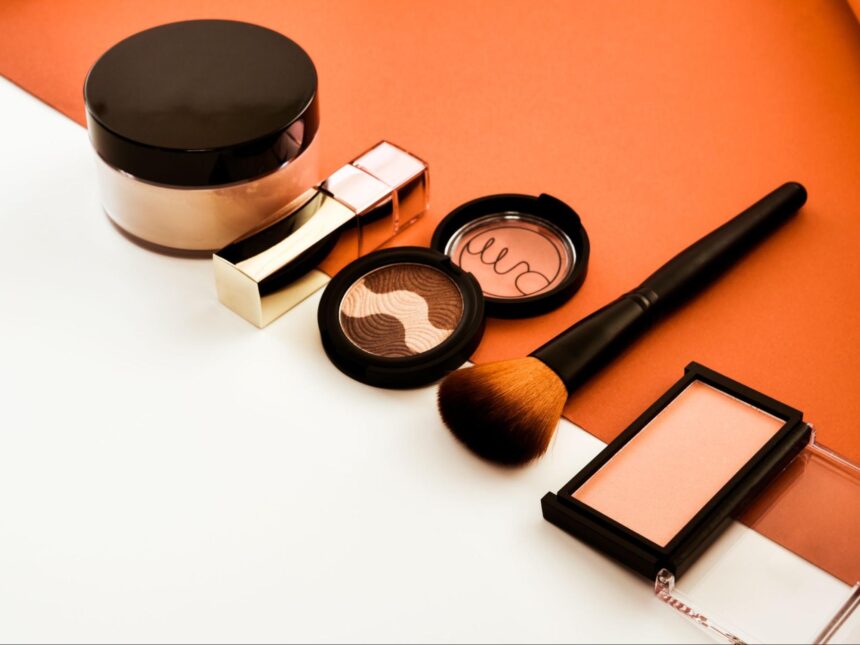Cosmetics” have been attracting a great deal of attention in the Japanese domestic online shopping market, and overseas as well, “cosmetics” related brands have earned a very high reputation for the quality of Japanese products. In order to fully meet the demand for products made in Japan, sales of products to overseas markets will become a very important issue in the future.
In this issue, we will focus on “cosmetics,” a particularly high-selling item among cross-border EC products destined for China, and explain why cosmetics are attracting so much attention. In addition, we will provide a detailed overview of cross-border EC in China.
目次
Impact of Japan’s cross-border EC in China, a super-massive market

With a total population of approximately 1.4 billion people, China is positioned as one of the world’s largest markets. The size of the cross-border EC market from Japan to China is approximately 1.6558 trillion yen, with a growth rate of 7.9% per year, and further development is still expected. The total value of U.S. exports to China is approximately 1,727.8 billion yen, exceeding the size of the market from Japan to China.
With a wide variety of products being sold to China and many consumers in the country, a great deal of commerce is taking place in China.In addition, “cosmetics” are the products with particularly high sales among commerce from Japan to China via cross-border EC.
A 2018 Japan External Trade Organization (JETRO) survey of Chinese consumers’ attitudes toward Japanese products and other products shows the following results.
When asked what kind of Japanese products they have purchased through cross-border e-commerce, 47 respondents answered “basic cosmetics %でした。さらに、「メイクアップ化粧品」と答えた人がおよそ45% In addition, %でした。さらに、「メイクアップ化粧品」と答えた人がおよそ45%,” making cosmetics the top two most purchased products.
When asked what kind of Japanese products they would like to purchase through cross-border e-commerce in the future, “basic cosmetics” was the most common answer, at 38%, again by far the most common answer.
As you can see above, Japanese cosmetics have become quite popular in the Chinese market.
Why are Japanese cosmetics so popular in China?
Products made in Japan have a very good reputation for their high quality overseas, and it is also true that cosmetics sold in Japan have gained very high recognition worldwide, as evidenced by the popularity of cosmetics brands such as “Shiseido”.
Another reason for the popularity of Japanese brands is that some users prefer to purchase Japanese products over Chinese products, coupled with the high reliability of Japanese companies.
The fact that only products that have been specially approved and sold through the development of medical research and strict standards in the production process, as well as the fact that they are made with ingredients that are close to natural, are among the reasons why Chinese consumers prefer to buy Japanese cosmetics. In addition, because counterfeit products can easily fly off the shelves in China, products that are accompanied by a “level of trust” and “sense of security” are still recognized as valuable.
Incidentally, one Japanese cosmetics brand, Shiseido, has been conducting live commerce to China and continues to increase sales despite high competition. Live commerce refers to a method of selling products while showing video on a live broadcast.
Because people viewing the video can ask questions of the seller in real time, live commerce allows us to convey the appeal of the products we sell to consumers in a deeper and more reliable way.
On “Bachelor’s Day” in November 2020, which is said to be the most exciting day in China’s e-commerce world, Shiseido’s live commerce attracted approximately 400,000 viewers.
By finding ways to appeal the full appeal of the products your company is selling, not just major popular brands such as Shiseido, and by reinforcing this appeal, consumers will naturally follow your enthusiasm.
In order to survive in the highly competitive cosmetics market, it is important to communicate the differences between your company and other companies.
Overview of Article 26 of the EC Law of the People’s Republic of China

An initiative has been launched to establish articles on EC in China by law, with the aim of achieving healthy market development. This initiative has resulted in the implementation of the Electronic Commerce Law of the People’s Republic of China (China EC Law) starting in January 2019.
In addition, Article 26 of the EC Law of China is the most important thing to pay attention to when developing cross-border EC from Japan to China.
The content of Article 26 of China’s EC Law can be briefly summarized as follows: When engaging in e-commerce transactions such as EC, business owners and operators must ensure that they comply with the laws and regulations of import and export supervision and management.
Two things are necessary to comply with this
- File an NMPA application.
- Apply for CCC
An NMPA application represents an application for medical drugs, insured food, cosmetics, etc., while a CCC application represents an application for electronic products, etc.
In order to comply with Article 26 of the EC Law of China, you must apply for either of the above.
In the case of cosmetics, it is always essential to file an NMPA application before obtaining a sales license, so please keep that in mind.
About NMPA Application
If you want to sell cosmetics to China, you must submit an NMPA application.
Two types of this NMPA application are available
- General Application
- application for a draft
The general application refers to applications required for sunscreen, hair color, etc., which are considered special cosmetics, and the other application refers to applications that can be used for hair care, skin care, etc., which are considered general cosmetics.
For general applications, the NMPA’s Beijing General Office will handle the application, while for a fiduciary application, the NMPA’s regional office will handle the application. In both cases, the basic application process remains the same and follows the order below.
- Complete the NMPA application in China and pass the component check examination.
- Sign a contract with a liability company within the borders and register
- Prepare all the necessary documents for sales and ship product samples to China.
- If you successfully pass the NMPA review, you will receive a sales permit and begin selling the product.
Note that while a fitness-for-sale application will be approved in about 3-4 months, a general application will take about 6-8 months, which is a longer time than a fitness-for-sale application. Please note that it takes longer to obtain a sales permit for a general application than for a fictitious application.
Deregulation in China
One good news that will boost cross-border EC in China is the deregulation of China.
The following four changes are explained below.
- No longer required to submit permits or filings
- Expansion of cross-border EC area approved
- More products with preferential import duties
- Import limits for cross-border EC have been raised.
Let us look at them one by one.
No longer required to submit permits or filings
Chinese domestic policy requires the submission of a customs clearance certificate for new imports.
A separate import permit, called an import permit, would have been required for importing cosmetics and other products for which a customs clearance certificate is required.
However, that policy has been postponed, and at this time, an import permit is not required for the import of cosmetics in cross-border EC.
It is quite possible that there will be more changes in the future, so it is important to check back from time to time.
Expansion of cross-border EC area approved
The area covered by cross-border EC was originally limited to 15 cities, resulting in a small range of commercial transactions.
However, 22 new cities have been added from these 15 cities, so that a total of 37 areas are now available for cross-border EC.
The fact that major cities in China are now within the scope of areas where cross-border EC is available presents an opportunity for cross-border EC operators to further expand their commerce business.
More products with preferential import duties
By selling preferential import duty products designated in China to Chinese consumers, the tax on such products will be lower than that on exempted products, thereby improving profits. A total of 63 new products will be added to the list of products with preferential import duties, including malt-derived beer.
Since a total of 1,321 items have been designated as tariff imports as a result of these new additions, we recommend that you examine them in detail to obtain accurate information.
Import limits for cross-border EC have been raised.
There is a limit to the amount of money that can be purchased through cross-border e-commerce within China. Previously, there was a provision of approximately 30,600 yen (2,000 RMB) per transaction.
However, deregulation has also been applied to this limit, which will now be raised to approximately 76,500 yen per use.The annual purchase limit will also increase in amount from approximately ¥306,000 (RMB 20,000) to ¥398,000 (RMB 26,000) per person.
summary
In this issue, we have explained why cosmetics are attracting so much attention in cross-border e-commerce, and we have also provided a detailed overview of cross-border e-commerce in China. Combined with the spread of the new coronavirus, the demand for online shopping continues to grow.
In order to develop our business for greater profits, it will be essential to expand our product lineup for overseas markets. For this purpose, we recommend that you seriously consider using cross-border EC.


















